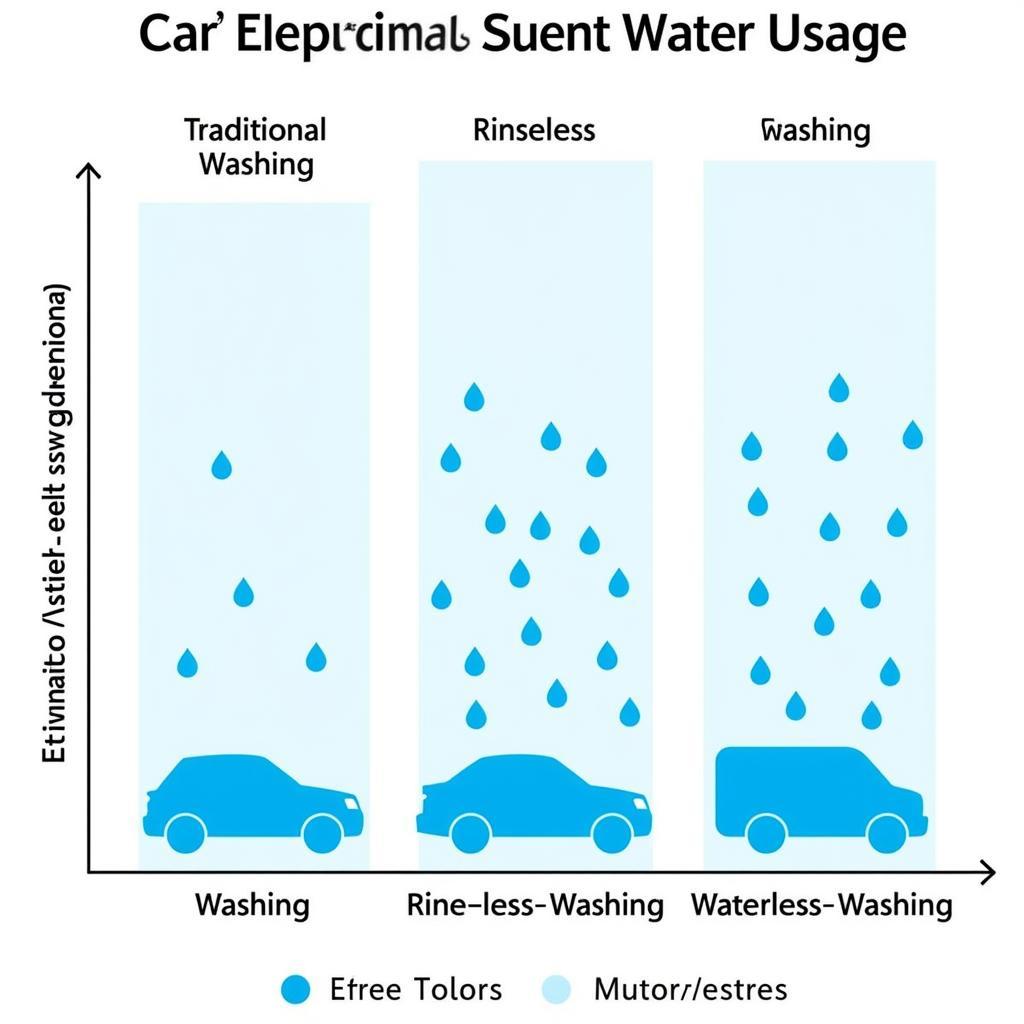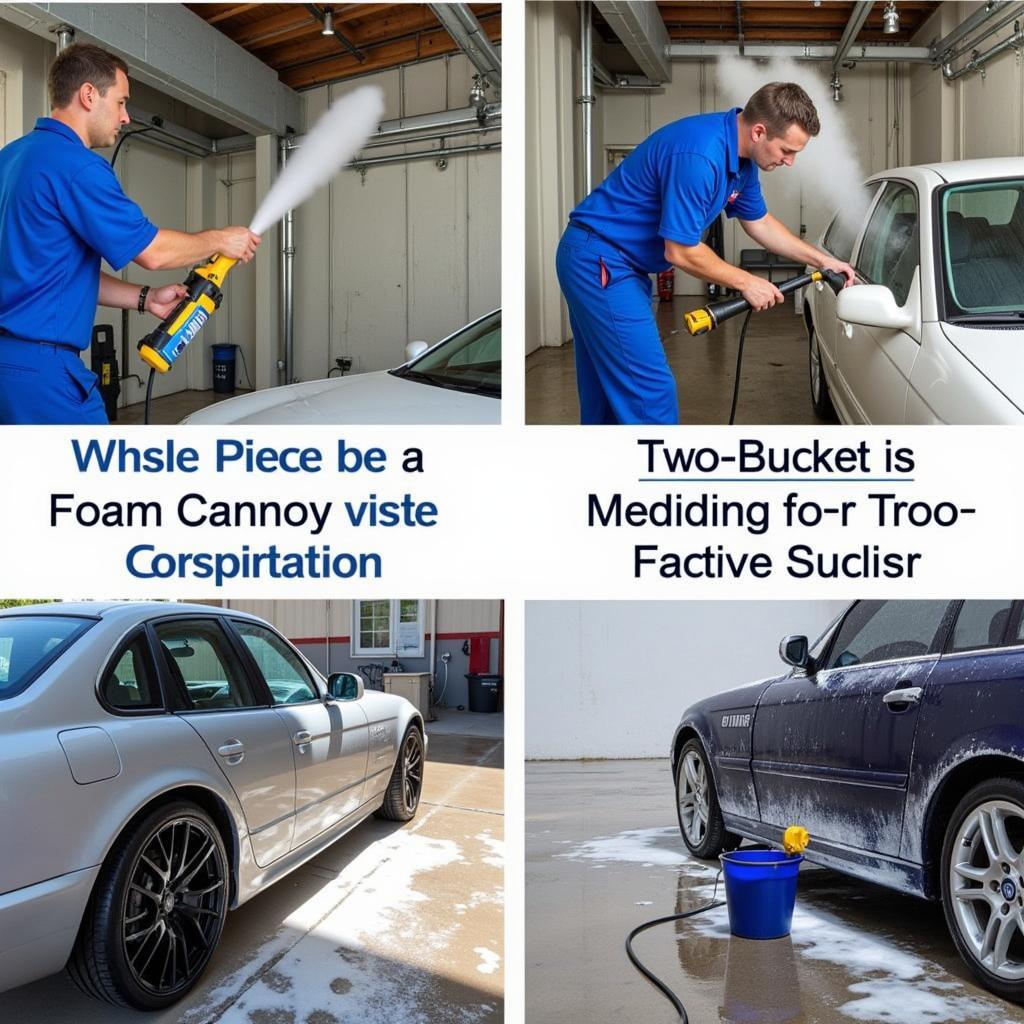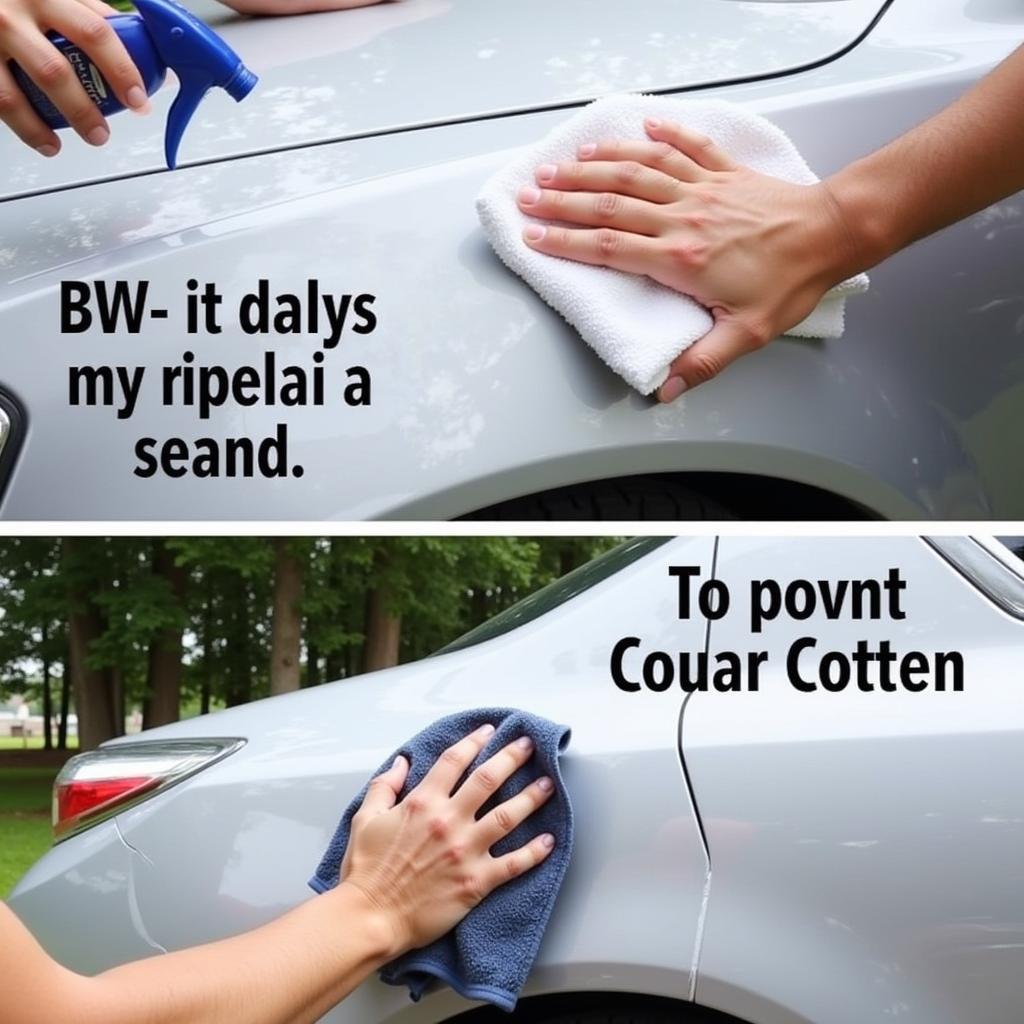Water is a crucial element in car detailing, but how much is actually needed? The amount of water used to detail a car can vary significantly depending on several factors, including the size of the vehicle, the level of soiling, the detailing methods employed, and the detailer’s commitment to water conservation. Let’s delve into the specifics of water usage in car detailing and explore how to minimize consumption without compromising results.
It’s essential to understand that using less water doesn’t necessarily equate to a less effective detail. How to diy detail your car guides often highlight water-saving techniques. By adopting efficient practices and innovative products, professional detailers and DIY enthusiasts alike can achieve outstanding results while conserving this precious resource.
Factors Influencing Water Usage in Car Detailing
Several key factors contribute to the total water consumption during a car detailing process. Understanding these factors allows detailers to optimize their water usage and implement eco-friendly practices.
Vehicle Size and Condition
The size of the vehicle plays a significant role. A larger SUV or truck naturally requires more water to rinse than a compact car. Similarly, a heavily soiled vehicle will demand more water for pre-washing and rinsing compared to one that’s regularly maintained.
Detailing Methods
Traditional car washing methods, like using a hose and bucket, tend to consume more water than modern techniques like rinseless or waterless washing. The choice of detailing services, such as what services do car detailers provide, also impacts water usage. For example, engine bay cleaning, which is often included in full details, requires a focused approach with controlled water application.
Detailer’s Equipment and Practices
The type of equipment used, like pressure washers and foam cannons, can influence water usage. High-pressure washers, while effective, can use substantial amounts of water if not used judiciously. Experienced detailers often employ techniques like pre-soaking and two-bucket washing to minimize water waste.
 Comparing Water Usage in Different Car Detailing Methods
Comparing Water Usage in Different Car Detailing Methods
Minimizing Water Usage in Car Detailing
Minimizing water usage is a priority for environmentally conscious detailers. Here’s how they achieve it:
- Rinseless and Waterless Washing: These techniques utilize specialized products that encapsulate dirt and lift it away from the paintwork, requiring minimal to no rinsing.
- Pressure Washer Efficiency: Using a pressure washer with adjustable settings and a focused nozzle can significantly reduce water consumption.
- Two-Bucket Method: This method prevents cross-contamination and reduces the need for frequent water changes, ultimately saving water.
- Pre-Soaking: Thoroughly pre-soaking the vehicle with a quality cleaning solution loosens dirt and grime, reducing the amount of water needed for rinsing.
- Water Reclamation Systems: Some professional detailing facilities invest in water reclamation systems to recycle and reuse water, significantly minimizing their environmental impact.
How Much Water Does a Professional Detailer Use?
Professional detailers, aware of the importance of water conservation, strive to minimize their water footprint. A typical full detail might use anywhere from 10 to 40 gallons of water. This amount can be reduced significantly with water-saving techniques. Knowing how car detailers clean engines reveals their focused approach to minimizing water use in this specific area.
 Professional Detailer Implementing Water-Saving Techniques During Car Wash
Professional Detailer Implementing Water-Saving Techniques During Car Wash
How Much Water is Used for a DIY Car Detail?
DIY car detailing can be just as water-conscious. Using a rinseless or waterless wash method can drastically reduce water usage to just a few gallons, or even none at all. Tips on what is a good tip for a car detail often focus on water conservation strategies for DIY enthusiasts.
“Effective car detailing isn’t about how much water you use, but how you use it,” says renowned detailing expert, Michael Davies. “By adopting smart techniques and the right products, we can achieve exceptional results while minimizing our environmental impact.”
 DIY Car Detailing with Rinseless Wash Method for Water Conservation
DIY Car Detailing with Rinseless Wash Method for Water Conservation
Conclusion
The amount of water used to detail a car can vary greatly, but with conscious effort and the right techniques, water consumption can be significantly reduced. Whether you’re a professional detailer or a DIY enthusiast, adopting water-saving practices is not only beneficial for the environment but also contributes to a more efficient and cost-effective detailing process. Remember, achieving a spotless finish doesn’t have to come at the expense of our planet’s precious resources. How Much Water Does It Take To Detail A Car? Less than you think, with the right approach.
FAQ
- What is rinseless car washing?
- How does waterless car washing work?
- Is waterless washing safe for my car’s paint?
- What are the benefits of using a pressure washer for car detailing?
- How can I reduce water usage when washing my car at home?
- What is the two-bucket method for car washing?
- Are there any eco-friendly car detailing products available?
Car detailing sometimes raises further questions like how to maintain a car’s clear coat during the process. For more information on this topic, check out our guide on how to detail car with clear coat.
Need help with your car detailing? Contact us via WhatsApp: +1(641)206-8880, or Email: [email protected]. Our customer service team is available 24/7.

Leave a Reply